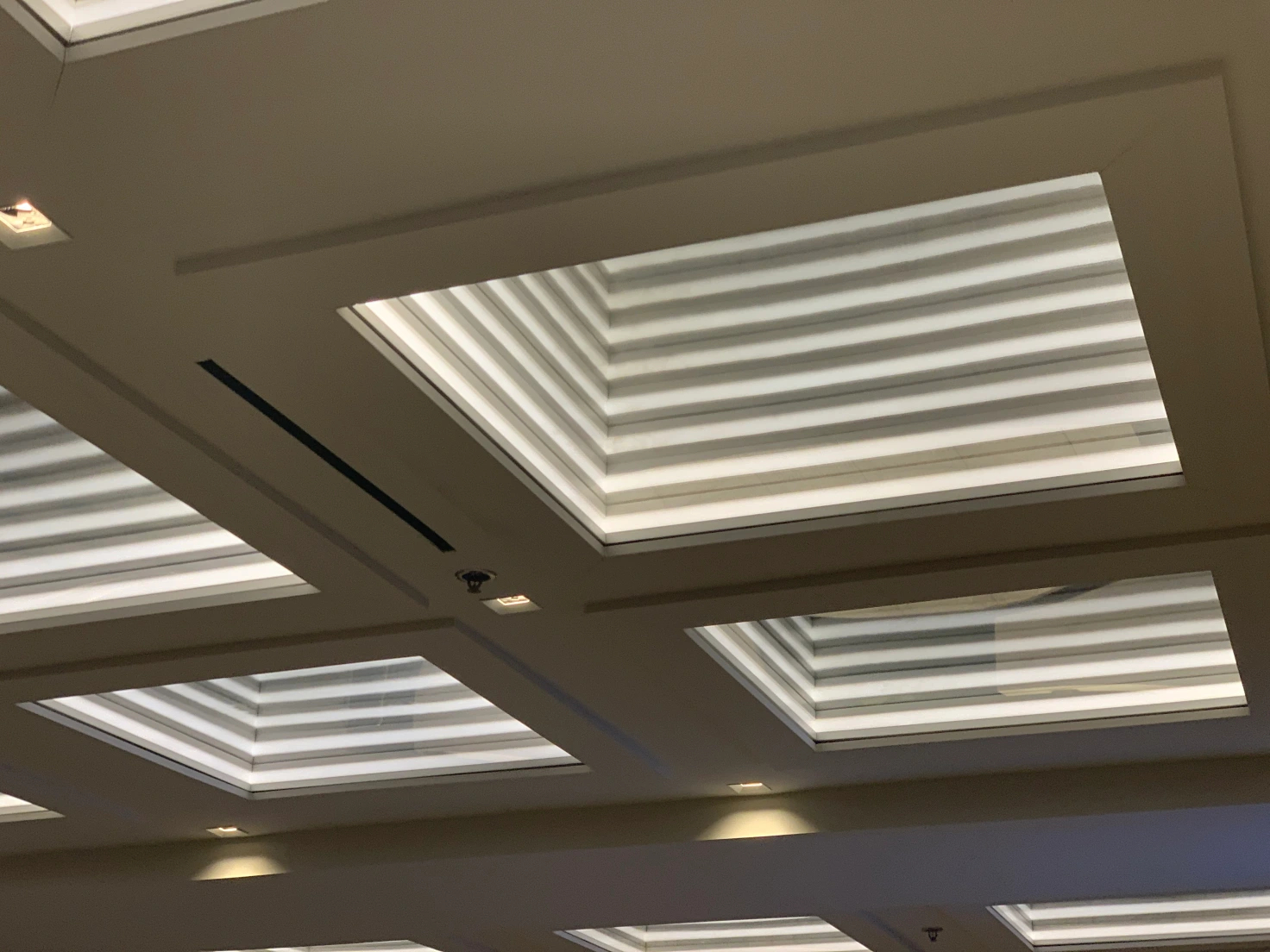We take light for granted: we assume it will be bright enough to see whenever we want it so, even in the middle of the night. We assume entrances will be lit, lobbies will be illuminated, restaurants will glow. Sometimes, despite being taken for granted, we notice something that catches our eye. I call this not sightseeing but lightseeing.
The effect above is called an infinity box and is made with a small sandwich of two-way mirror, light, and standard mirror that reflect each other infinitely. The result, in this hotel lobby, is what appears to be a deeply coffered modern ceiling. But the effect takes only a few inches to produce.
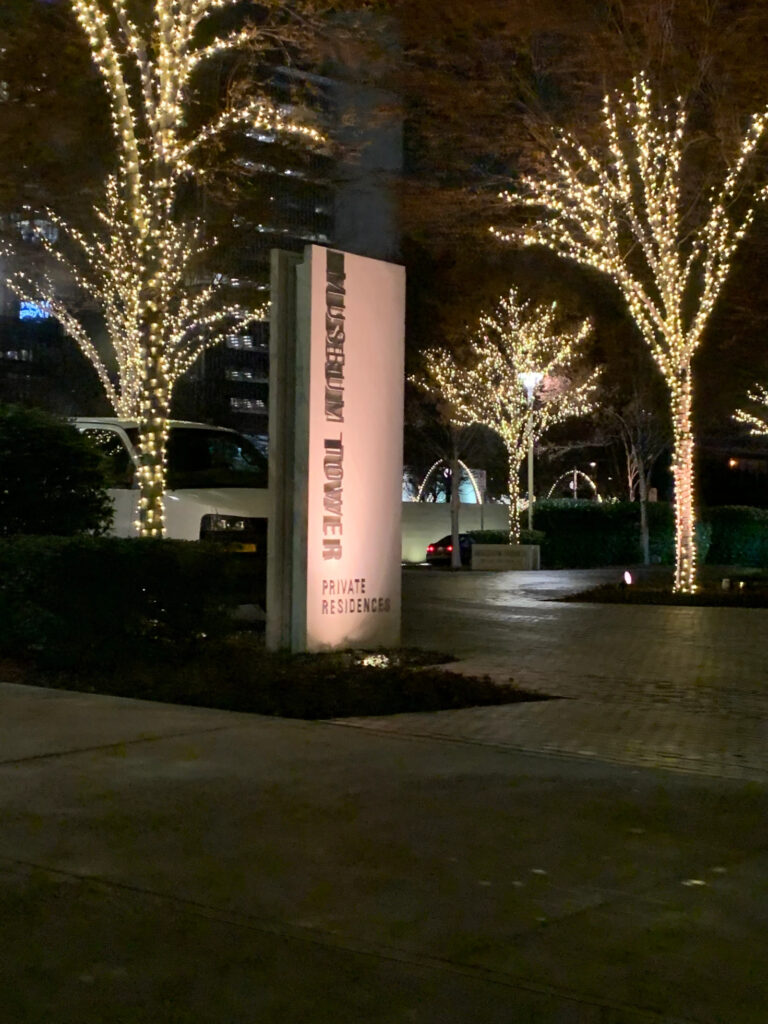
Lightseeing shows us the ugly, too. This sign, illuminated from below, utilizes steel lettering and standoffs that hold the title out from the stone. When combined with light, the shifting shadows make it harder and harder to read. Instead of revealing the words, light is obscuring them.
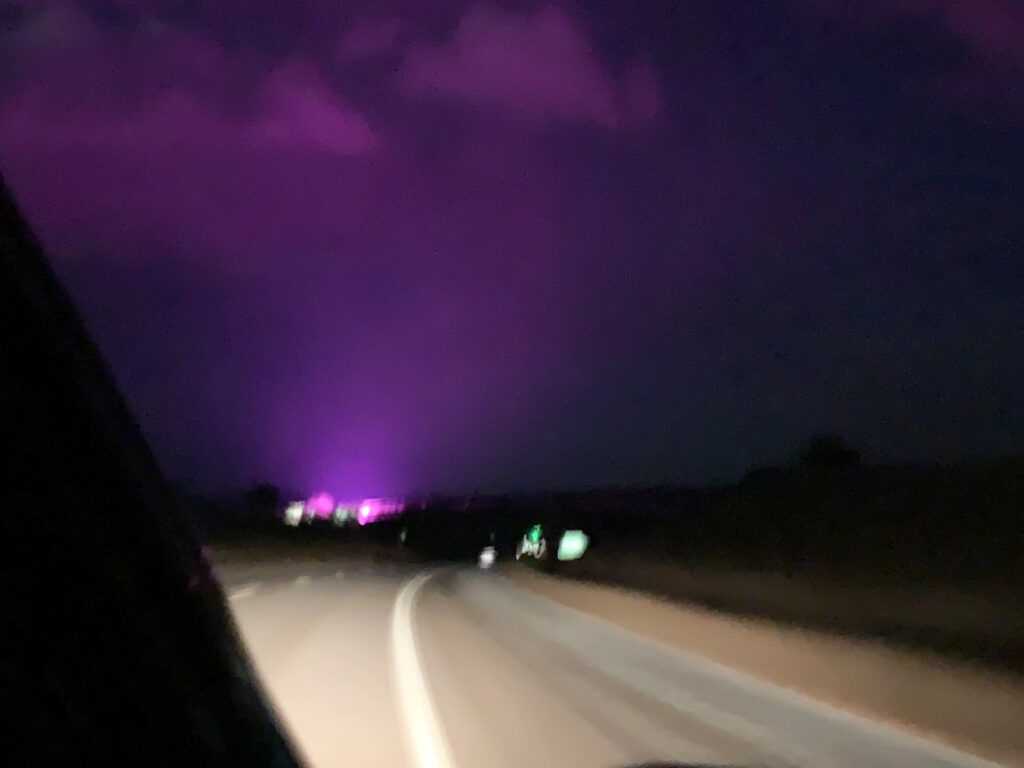
Don’t look at the photo above too long- the terrible out-of-focus-because-I’m-holding-my-phone-out-the-car-window-in-sub-freezing-temperatures effect makes my eyes water. Just note one thing: the purple sky from something far away. On a recent trip to the Minneapolis-St. Paul area, Design Leader Bruce Clark and I noticed a purple glow reflecting off the clouds. The source was 10-15 miles away but turned out to be an organic vegetable and fish farm in the Wisconsin hills. The magenta light was speeding up the growing process and the greenhouse environment kept pests and disease to a minimum. That means we can get organic, local salad greens any time of the year. I just wish we didn’t have to see so much light wasted in the process.
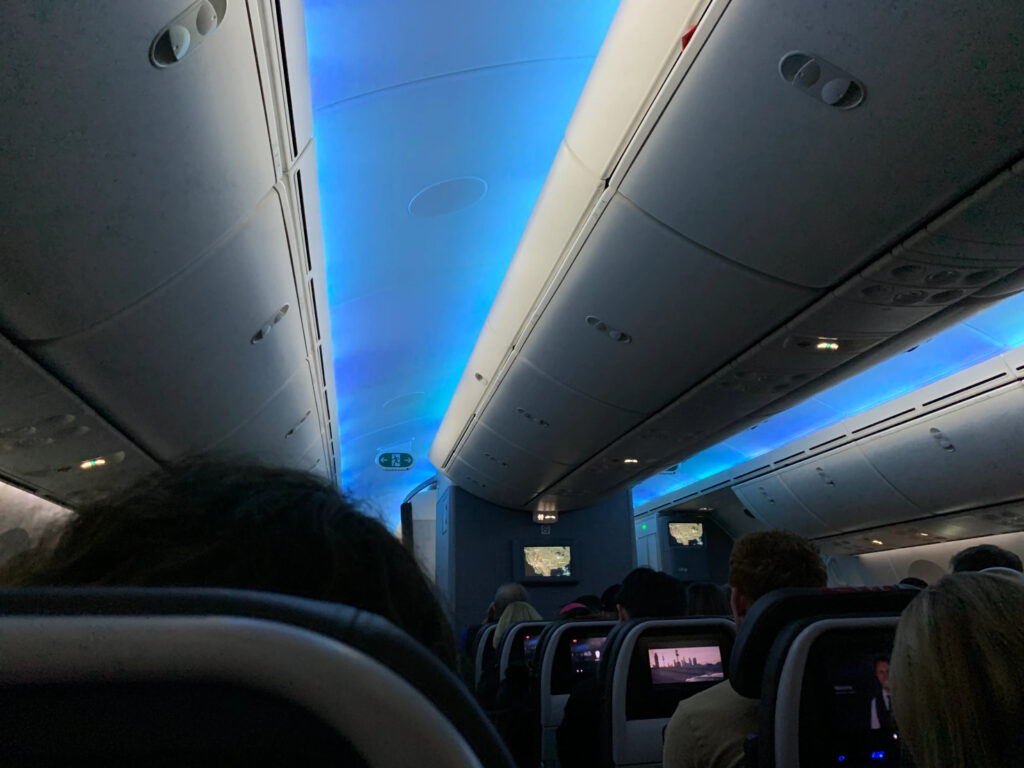
Everything you need to know about modern lighting can be found on an airplane. They have aisle lighting, emergency lighting, and ambient lighting provided by linear LED strips. In the airplane above the linear cabin lighting also changes color, providing a more dynamic and relaxing environment.
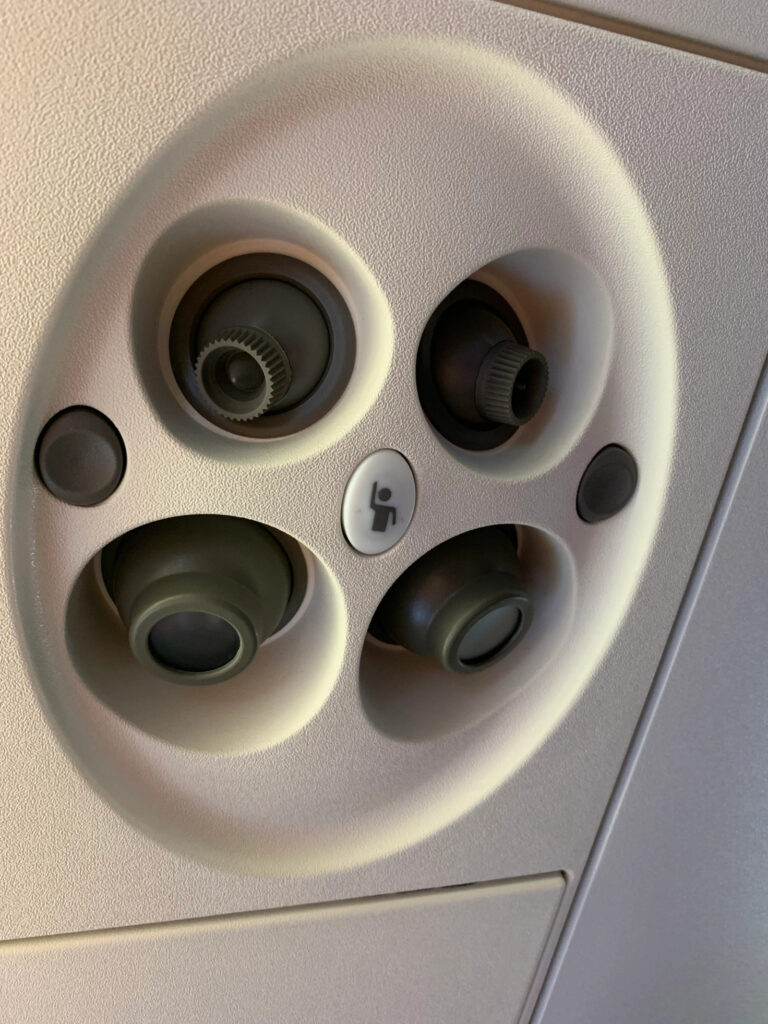
But don’t forget recessed downlights or, in this case, what we call recessed multiples. This one combines two adjustable reading lights and two air vents, but we use similarly functioning multiples in many of our projects.
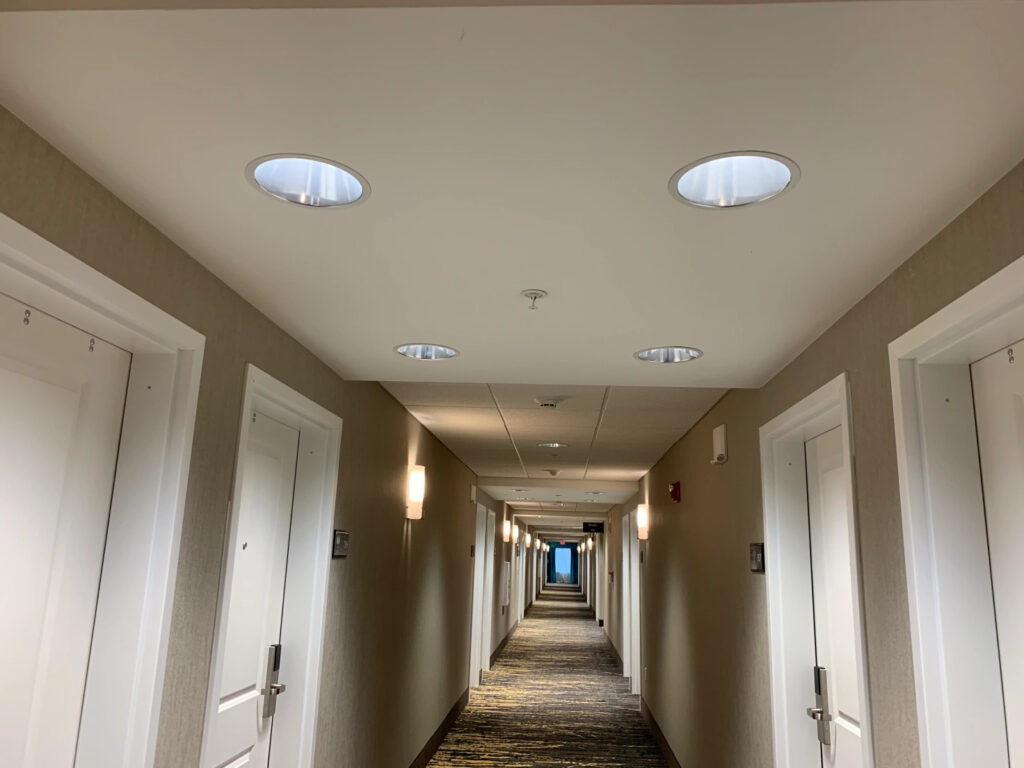
Ah, hotel corridors. There is a rule to these: bright at the doors, dim in-between. Sarcastically speaking, this is how hotels are able to push lumens under your door so effectively. They put blackout curtains on the windows but shine their brightest lights at the hall door.
In this case, giant 8″ recessed downlights look large enough to beam you into space while putting enough light in the hall to perform surgery. The door handles are well lit- great for unlocking- but the room numbers are dark. There are better ways to do this, but perhaps not cheaper ways.

Aargh. This does not have to happen.

This is glare-free even illumination, like the kind promised by indirect-only lighting. Winter in the midwest has plenty of this weather, and we cannot wait to get back to the high-glare situation of sunlight. If you don’t want to live under cloudy skies like this all the time, make sure your indoor environment isn’t cloudy.
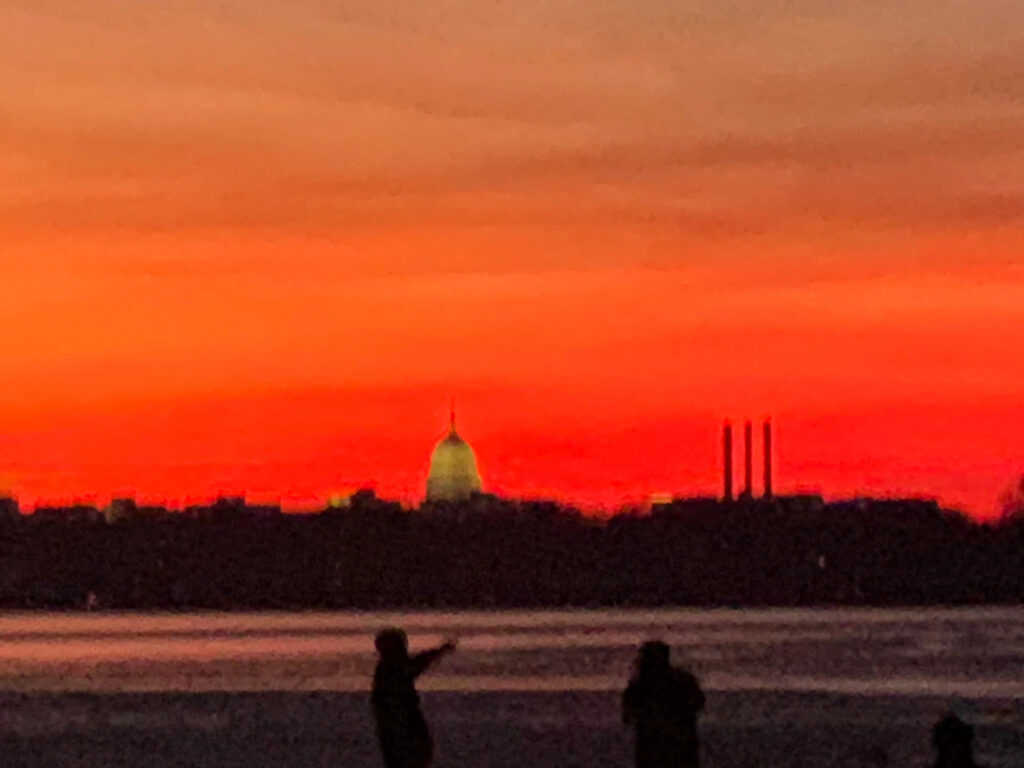
Finally, a zoomed-in photograph of Lake Monona and the Wisconsin State Capitol in the background from a recent outing in my new hometown of Madison. Most of us refuse to use colored light indoors- too “Vegas” as my wife would say. Maybe that’s because Las Vegas ruined colored light for the rest of us. But when we go outside, few of us say “what a nice clear white sky” or “that was a beautiful colorless sunset.” Colored light is part of what makes nature interesting. Why leave it out in the cold?
